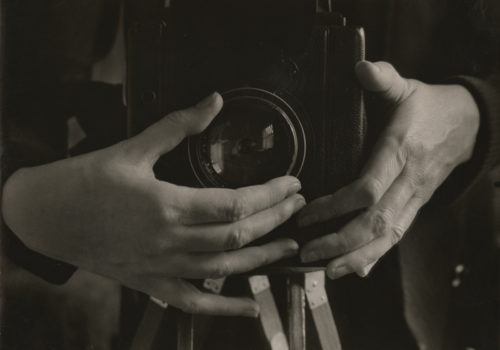With their velvety texture, these vintage photographs of Alma Lavenson are rooted in the 1930s and 40s. Lavenson documented the era’s architecture and industrial environment. Her photographs of metal and wood mechanisms, taken mainly at the end of the 1920s, demonstrate the photographer’s penchant for geometrical compositions, which she would develop later in her photographs of rural America as she captured the vertical and horizontal lines of the countryside in a search for abstraction.
Her interest in the marine world, with its sails, ropes, helms and other patterns, recalls her obsession with shapes. Shadow is another important element in her compositions. For example, in one image, the wind has blown snow against one side of a large tree, and its branches and leaves become nothing more than fine lines cutting through the sky with the delicacy of black ink on a Japanese print.
Like the modernists, the photographer experimented with pictures of nature and flowers, shooting them from so close that all the viewer sees are sensual curves. There’s a surprising warmth in Lavenson’s photographs, as in this close-up of an engraver’s hands: creating a mise-en-abyme between engraving and, by extension, photography, in which the shadow of the artisan invades the background to reveal the presence of the artist, whose lyrical personality is inherent in all creation, a metaphor for the consubstantiality of the soul and the mechanical gesture.
Laurence Cornet
Alma Lavenson
Until June 1st, 2013
Gitterman Gallery
41 East 57th Street, Suite 1103
New York, NY 10022
USA
T: 212.734.0868
















